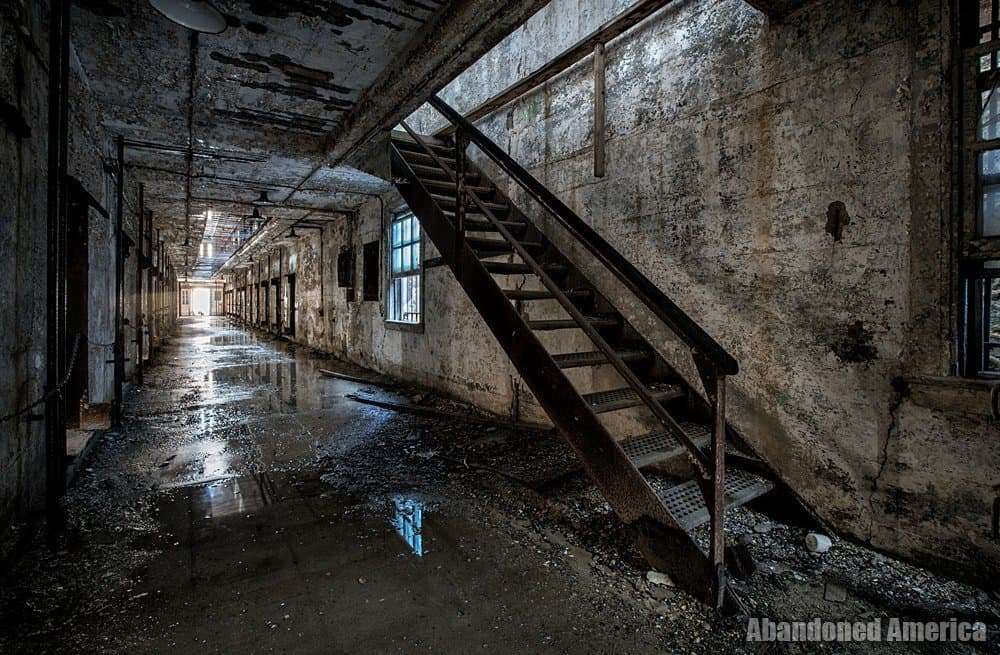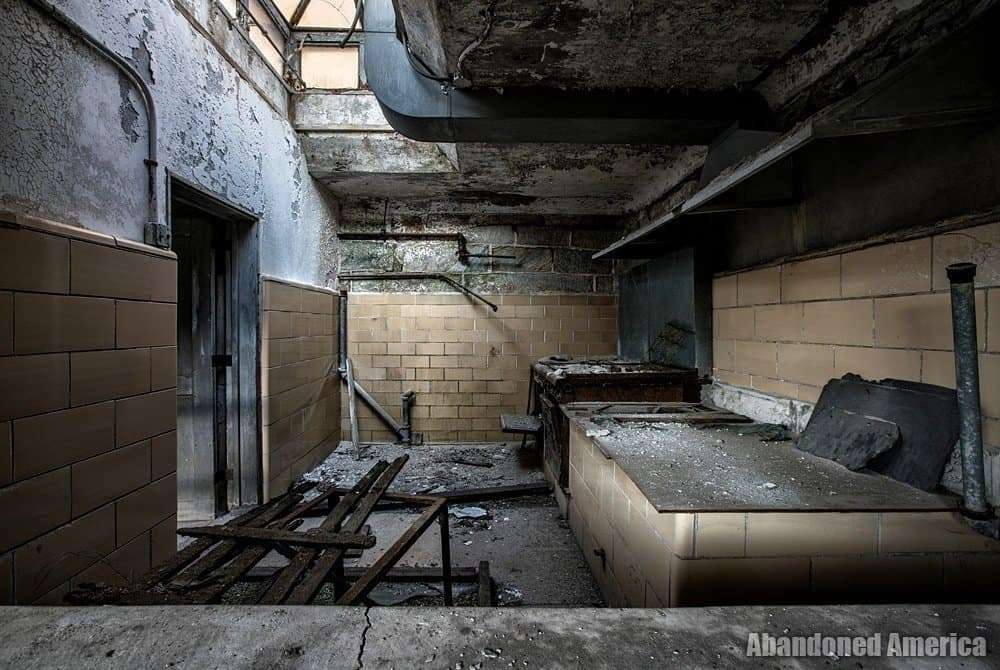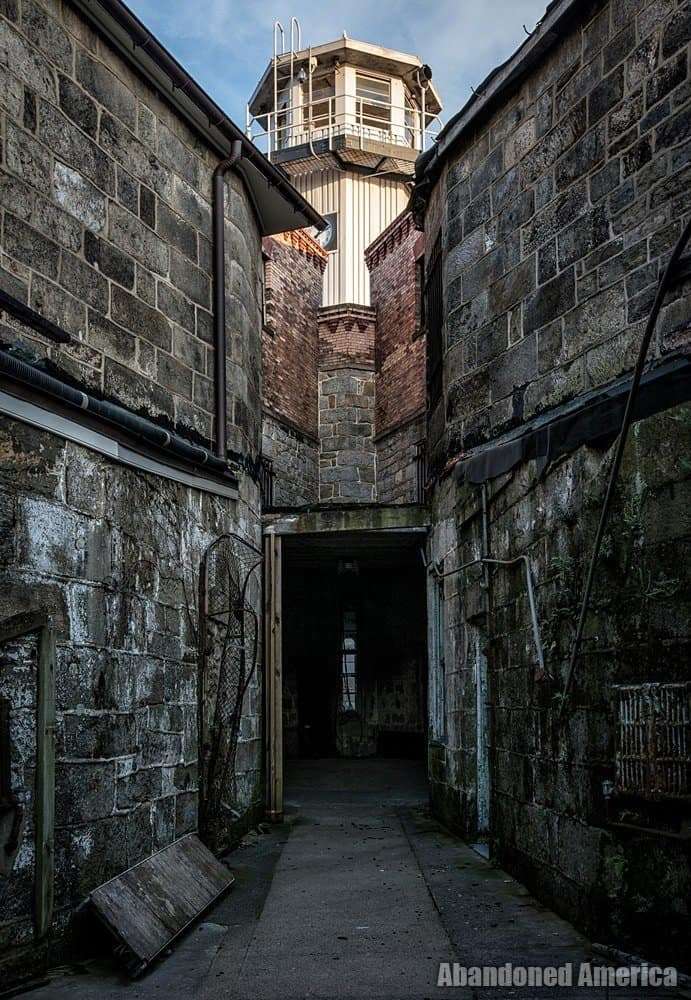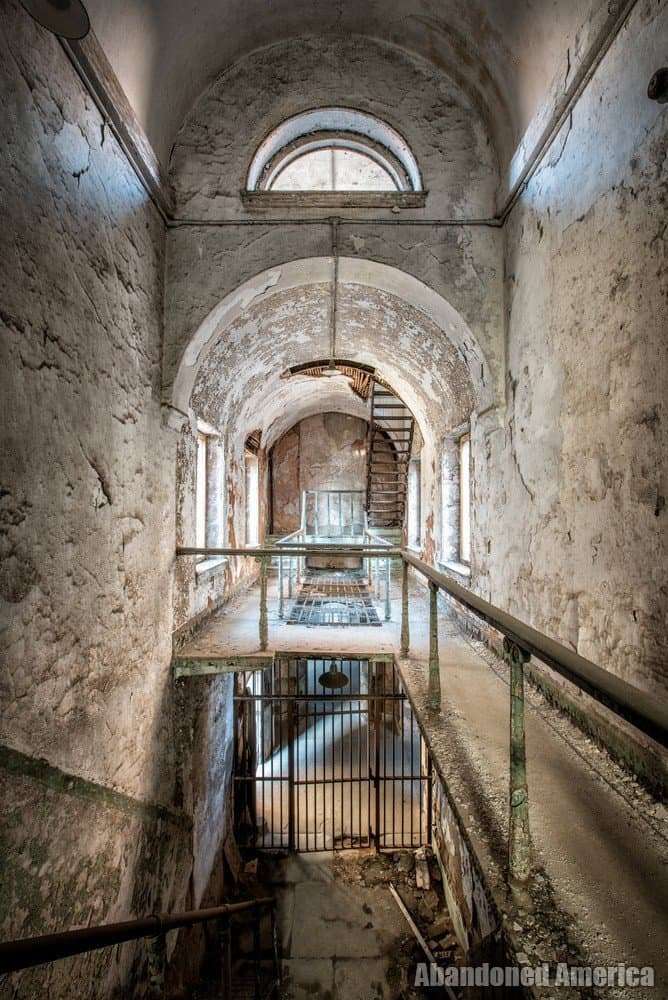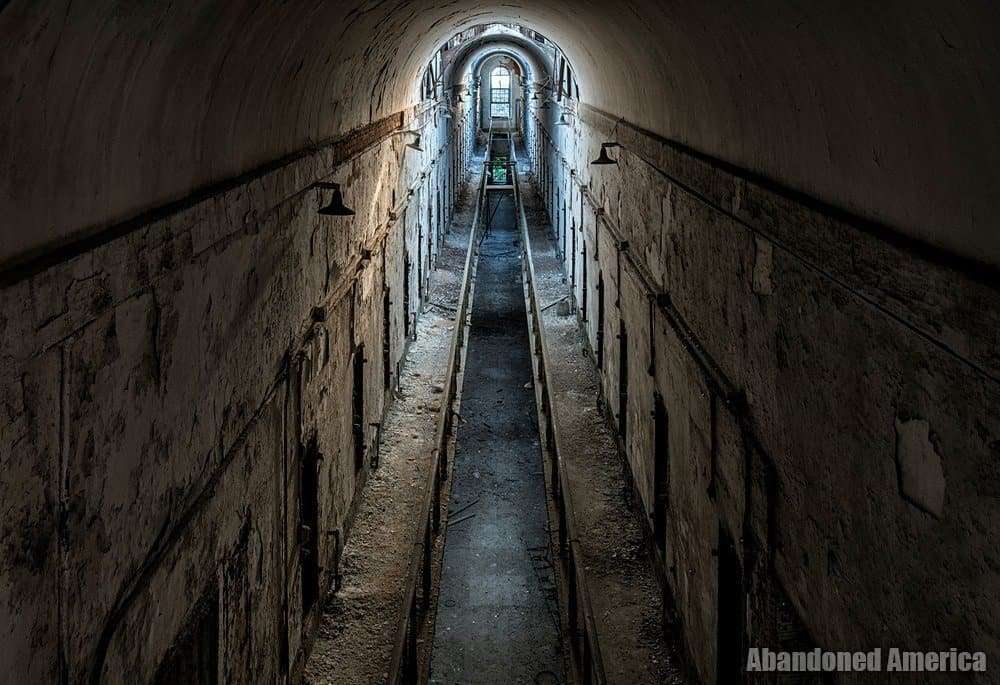Eastern State Penitentiary
Eastern State Penitentiary in Philadelphia is currently one of the city’s best historical attractions, but also is a stellar model of how tourism can be used to preserve endangered sites and educate the public. Nearly 250,000 visitors tour the site yearly, and exhibits that explore the site’s past through interviews with prisoners and guards share space with displays about prison reform and yearly art installations – there’s even an immensely popular haunted house attraction in the fall. It’s easy to forget that the building was once in ruins and endangered, and to take for granted all of the hard work that went into making it accessible to the public.
When John Haviland was chosen to design Eastern State Penitentiary in 1821, the United States was looking for ways that its public institutions would be redefined. Haviland, who would go on to design several other prisons including the Old Essex Prison in Newark, NJ and thus become nicknamed “The Man Who Jailed America”, opted to employ a unique ‘hub and spoke’ design that was loosely conceived as a major overhaul of Bentham’s panopticon model. Seven cell blocks radiated outward from a central hub, and while the outside was designed to look fearsome and imposing, the interior was meant to resemble a church. The design became quite popular and was known as the Pennsylvania System, and was applied to prisons across the nation including Holmesburg Prison in Philadelphia, which bears a striking resemblance to Eastern State.
The word penitentiary stems from the word penitence; Haviland’s theory was that, when kept in silence with no communication between prisoners, inmates would be forced to reflect on their misdeeds. The ‘eye of God’ slits in the ceiling were to encourage humility, and one theory is that the small doorways were meant to force prisoners to stoop as they entered their cells. When the prison opened in 1829, prisoners were taken to the cells with hoods over their heads and allowed to possess only a Bible. Cells had central heating and flush toilets, which was a massive upgrade from previous jails and prisons, and inmates were allowed to occupy themselves with labor, though the lack of human interaction had predictably detrimental effects on the mental health of inmates and by 1913 the idea of penitence and silence were officially scrapped.
The prison became overcrowded as Philadelphia’s population blossomed and by the 1920s 2,000 prisoners were kept in a space designed for 300. As more modern prisons were built to more capably house larger populations, Eastern State fell into disrepair. It was closed in 1970 and, aside from a brief period where it was used to temporarily hold inmates involved in riots in Holmesburg Prison in 1971, it was left to decay for over twenty years.
While proposals for reuse were put forth, in 1988 mayor was petitioned by the Eastern State Penitentiary Task Force to prevent redevelopment of the historic site. Eastern State Penitentiary Historic Site Inc. began offering tours to the public in 1994, and to date has raised $14 million in funding to preserve the site. Although much of the site is in a state of arrested decay, much work has been done to stabilize the building and continue opening previously inaccessible areas to visitors. It is, in my opinion, one of the greatest and most inspiring examples of taking an abandoned site that seemed doomed and turning it into a fascinating and thoughtful means of exploring not only our history but the concept of incarceration itself. When asked what I wish would have become of the many demolished asylums or whether abandoned buildings are inherently lost causes, I find myself referencing Eastern State Penitentiary as a point of both hope and inspiration. The irony that it is a former prison is not lost on me.
Though much of the prison is accessible to visitors year round and thus no longer what I would consider ‘abandoned’, several areas remain untouched. The old cell blocks, hospital facilities, kitchens, guard towers, and yards that I was generously granted access to (and are pictured here) are both beautiful and melancholy – a reminder of both the cruelty people can inflict on each other and the cruelty that is then used to punish them for it. We tend to mistakenly assume that they way things are is the way they always were and the way they always will be. Eastern State Penitentiary challenged the status quo beliefs about incarceration when it was built, and thankfully it continues to do so today.
For information on tours and visiting hours, visit the Eastern State Penitentiary website here: https://www.easternstate.org/
Matthew Christopher PA Philadelphia Jul 07, 2021 History

